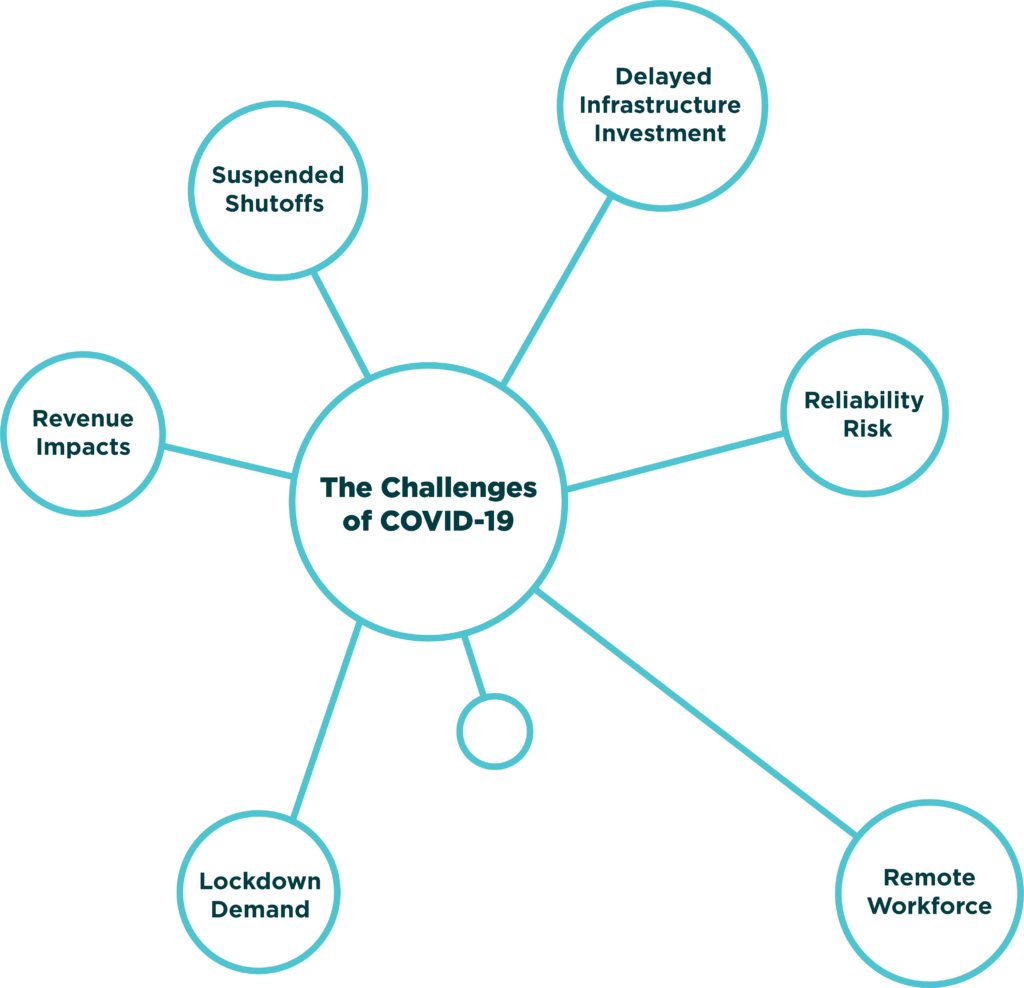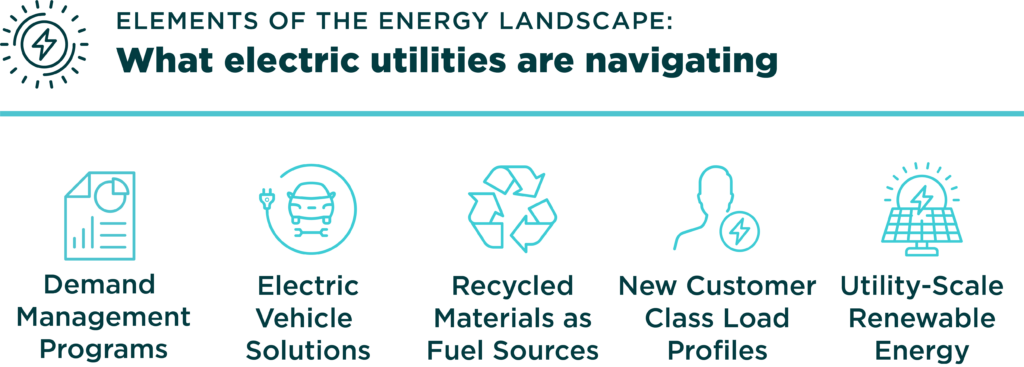The COVID-19 pandemic and the war in Ukraine — these events are how the world will remember 2020 to 2023. Events like these reshaped communities, and in turn, electric utilities’ operating environments. These events might feel like worlds away, but their ripple effects are tangible. As utilities march forward toward new net zero emissions goals and find ways to harness the power of renewable energy and explore other innovative technologies, uncertainty will follow.
To successfully navigate uncertainty, electric utilities are keeping a careful eye on their finances and positioning themselves to be nimble. While a few years ago, the regular rate study might’ve happened every five years, utilities are now opting for an annual study and likely will continue with this practice into the near future. To better understand the electric industry’s existing condition and its future, it’s important to understand the history that brought us to this moment and its lasting impacts.
Until recently, electric utilities operated in a fairly stable environment, experiencing consistent demand. Most utilities had one concern in common: aging infrastructure. One morning in March 2020, everything changed.
2020 marked the start of a new era for the world, especially the energy sector. The World Health Organization declared the Coronavirus outbreak a pandemic on March 11, 2020. The subsequent lockdowns swiftly altered the energy landscape, and utilities found themselves needing to adapt to new customer usage behaviors. Non-essential business activities were paused, cratering demand from commercial and industrial customers. Residential consumption, however, quickly rose with everyone staying home.
Then came the next spark of change. Many people – customers of electric utilities – were laid off. In response and to cushion the impact, many electric utilities had already voluntarily suspended shutoffs. In addition, governments in 28 states ordered the utilities to discontinue shutoffs, according to data collected by the Energy and Policy Institute. Fewer dollars coming in took a toll on electric utilities’ revenues, while utilities were still incurring the cost of providing electric services.
Utilities that had adopted smart technologies prior to the pandemic saw an easier transition to a remote workforce. However, field operators still faced challenges. Infrastructure needs were difficult to address, and construction was postponed unless it was emergency maintenance. This exposed electric utilities to reliability risks and delays in infrastructure investments, including investment in distributed energy sources.

As the world emerged from the pandemic, in February 2022, the war in Ukraine began. Sanctions on the sale of Russian hydrocarbons, namely oil and natural gas, produced immediate global impacts. Data from the U.S. Energy Information Administration (EIA) shows the cost of fossil fuels increased by 34% in the immediate aftermath. In addition to rising fuel costs, electric utilities faced a spike in inflation and supply chain issues. These factors drove up powerplant operating costs and wholesale electricity prices for many electric utilities. Production and distribution of materials necessary for renewable energy infrastructure investment were delayed or halted.
As electric utilities navigated the impacts of COVID-19 and the war, it became clear that they were operating in a new, costly environment. To adapt to that, regularly evaluating utilities’ financial health became a common practice.
Electric utilities make their customers a priority each day. This was made abundantly clear during the pandemic when many chose not to raise electric rates and paused service shutoffs to give some relief to struggling households. These efforts are a testament to utilities’ commitment to serving their communities. However, they also created new challenges across the nation. Now, we see utilities contemplating necessary rate adjustments, reflecting an even higher revenue requirement while trying to avoid rate shock to their customer base.
Between 2021 and 2022, the average residential customer bill increased by 13%, according to EIA. These increases address an 8% inflation rate and the general increased cost for operations and infrastructure investment. While electric utilities are slowly recovering, they’re still playing catch up when it comes to operating in this new environment.
The unpredictability of this new operating environment makes it hard for utilities to forecast operating and capital costs while still dealing with the consequences of these recent events. This makes staying on top of finances crucial. Prior to the pandemic, it was customary for utilities to consider adjusting rates every few years. Today, utilities would benefit more from reviewing their rates annually. An annual update helps utilities forecast more accurately and ensures they are in the financial position to make the investments they need today for a thriving utility tomorrow.
As electric utilities continue to navigate the challenges brought about by the past few years, they must also keep an eye on the horizon. Net-zero emissions goals and the adoption of advanced technologies are rising in popularity, and utilities are feeling pressure to find ways to achieve the ambitious goals that come with them.
In rejoining the Paris Climate Accords, the United States has set an ambitious goal to reduce net greenhouse gas emissions by approximately 50% by 2030 and achieve net-zero emissions by no later than 2050, according to the 2021 Long-Term Strategy of the United States. The U.S. plans to do this by decarbonizing electricity, electrifying most of the economy, and switching to other clean fuels. In related efforts, achieving goals enshrined in policies like the Federal Sustainability Plan and legislation like 2022’s Inflation Reduction Act, electric utilities will need major investments in energy sources that meet the climate action criteria.
Many utilities are exploring ways to achieve renewable energy production targets, including hydropower, utility-scale solar, and wind. Others are updating existing plants to use fuel sources from approved recycled materials. The way utilities choose to work toward net-zero goals will depend on their location, size and financial well-being, community size and demands, and what renewable resources are available in their climate.
Utilities will also need to consider the current electric system’s infrastructure capabilities. Customers’ adoption of certain technologies like electric vehicles (EV) will place a higher demand on the electric system, especially during peak hours. Utilities will likely have to mitigate this by adding new transformers to handle the additional load from households with EV technology.
With advanced technology growing in popularity and becoming more accessible, it’s important for utilities to begin addressing it. Solar panels are a prime example of this. Since the current electric system is designed for one-way energy transport, utilities will have to address this new local energy production. Reconfiguring the system flow and including storage solutions that make local solar energy beneficial at a systemwide scale is one way to do this.
Electric utilities are also exploring programs that would allow them to analyze usage and demand patterns of the customer groups that have adopted these technologies. Utilities may use these programs to help manage the demand placed on the energy system by sending pricing signals and incentives to customers. As electric utilities explore how they might adjust rates to meet future needs, these programs are another way to increase flexibility in the utility and provide a tool for studying new customer usage and demand profiles.

Today, stability is replaced by a landscape defined by uncertainty and change. The influence of global events, like COVID-19 and geopolitical conflicts such as the war in Ukraine, has made long-term predictions less reliable. Electric utilities are now compelled to operate on a shorter planning cycle, adapting swiftly to the rapidly changing circumstances.
As the world moves towards renewable energy and sustainability goals, as seen in commitments like the Paris Climate Accords, the ability to pivot and adjust becomes paramount. To navigate through this shifting terrain, utility management must prioritize adaptable strategies, continuously recalibrating financial projections and adjusting rates. This pragmatic approach, grounded in resilience and innovation, is the key to steering the industry into a promising future.